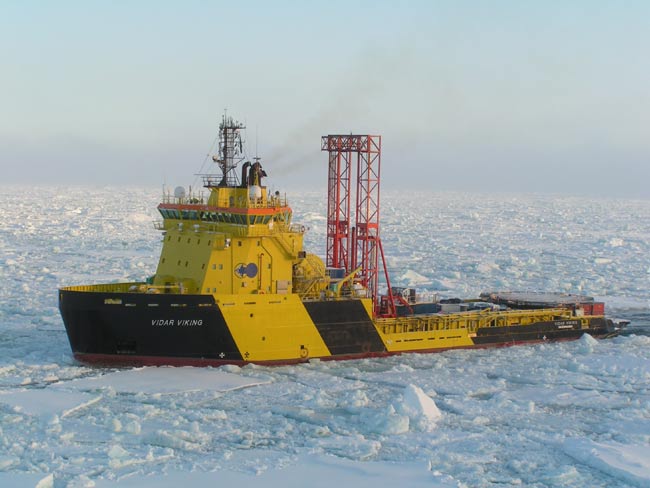Study Reveals Ancient Arctic Climate Swings

Scientists have uncovered the Arctic region's history of climate change buried beneath layers of ocean ice from a newly collected sediment core.
The 1,312-foot-long cylindrical sediment core sample provides a 56-million-year record of the continent's temperature trends. It reveals that approximately 45 million years ago, the Arctic went from being a warm greenhouse to the frosty ice-covered continent that we know today.
The results of the Arctic Coring Expedition, conducted in 2004 on the Lomonosov Ridge, 3,280 feet under the sea surfaceand 155 miles from the North Pole, are detailed in three papers published in the June 2 issue of the journal Nature.
Ancient global warming
About 55 million years ago, in an event known as the Palaeocene-Eocene Thermal Maximum, there was a period of rapid global warming. Scientists have not had any exact records of the climate in that region, however.
Now with the accumulated sediment, researchers were able to determine that summer surface temperatures of the Arctic Ocean reached as high as 64 degrees Fahrenheit and then rose to 73 degrees Fahrenheit.
Unlike today's warming, however, the ancient rise in temperature was not associated with human activity, of course.
Get the world’s most fascinating discoveries delivered straight to your inbox.
"Today's warming of the Arctic can, in all likelihood, be attributed to mankind's impact on the planet," said Kate Moran, professor of oceanography and ocean engineering from the University of Rhode Island. "But as our data suggest, natural processes operating in the past have also resulted in a significant warming and cooling of the Arctic."
Previously, scientists thought that the rapid period of warming occurred because there was a massive release of carbon dioxide into the air from methane in the ocean sediments.
It's also been hypothesized carbon was released by volcanism during the opening of the North Atlantic Ocean, when North America was separating from the Eurasian tectonic plate due to the drift of the seafloor.
But, even with high levels of carbon dioxide, climate models couldn't replicate such elevated temperatures.
The new studies, however, suggest that these unusually high greenhouse gas concentrations must have been accompanied by other factors to make the water so warm. These include oceans mixings due to hurricanes and polar stratospheric clouds, polar clouds in the second layer of Earth's atmosphere.
Freshwater ocean
The sediment sample also revealed abundant remains of a freshwater fern known as Azolla, dating back to about 49 million years ago, which indicate that there was freshwater flowing from the Arctic Ocean as far south as the North Sea. Without an inflow of salty waters, any excess precipitation compared with evaporation created a freshwater environment in the Arctic Ocean.
The end of the Azolla boom, about 48.3 million years ago, coincides with temperature rise in the sea suggesting an increase in salt and heat from the influx of waters from oceans in lower latitudes.
Pebble and sand discovered in the sediment core, which most likely fell out of the floating ice, is evidence that Arctic's climate cooling happened about 45 million years ago, tens of millions of years earlier than previously estimated. This coincides with Antarctica's cooling and suggests that both poles went through climate change simultaneously.
"Little direct evidence about the environmental history of the Arctic Ocean existed before our cruise, partly because of the enormous technological challenges of collecting the samples," Moran said. "We anticipate that our data will be used by climate modelers to give us better information about how climate change occurs and where global climate might be heading."



